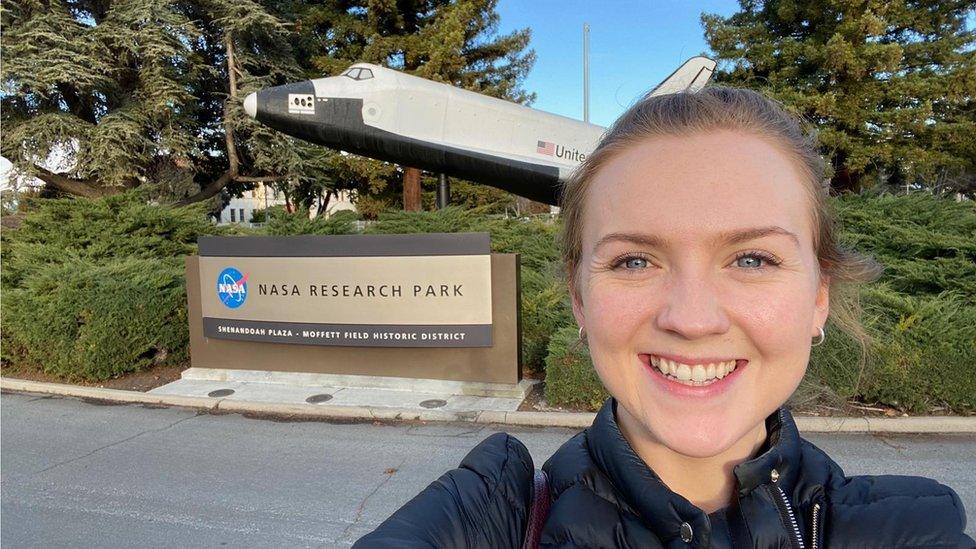Nasa unveils new class of astronaut candidates
- Published
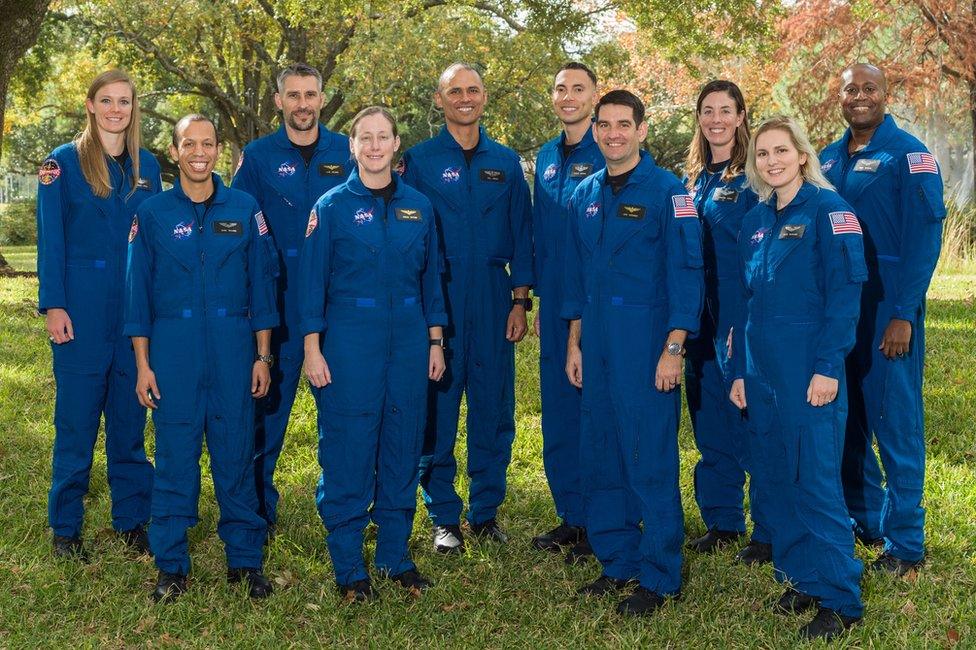
From L-R: Nichole Ayers; Christopher Williams; Luke Delaney; Jessica Wittner; Anil Menon; Marcos Berríos; Jack Hathaway; Christina Birch; Deniz Burnham and Andre Douglas
Nasa has unveiled its new class of astronaut candidates, who could fly to the space station and on future missions to the Moon.
They have gone through an interview process with several rounds, team exercises, a thorough medical check and aptitude tests.
The six men and four women were selected from a pool of about 12,000 applicants.
The candidates will now undergo two years of training before graduating.
"We've always had a frontier to expand and the frontier now is upwards, out into the cosmos," said Nasa's administrator Bill Nelson.
The group will participate in what's known as the basic Astronaut Candidate training programme, which is designed to develop the knowledge and skills they will require once they are selected for a flight.
The candidates are required to complete military water survival exercises, fly Nasa's T-38 training jets, and become scuba-qualified to prepare them for the spacewalk training - which takes place in a huge pool at Johnson Space Center in Houston.
Final selection as an astronaut is not guaranteed: they are required to complete the training to a satisfactory level.
Those who do graduate become eligible for flights to the space station and to the Moon - providing Nasa's Artemis programme is not delayed. They are unlikely to be assigned to missions straight away, however; they continue to hone their skills after becoming fully-fledged astronauts.

The new astronaut candidates are:
Nichole Ayers, 32, a major in the US Air Force from Colorado
Marcos Berríos, 37, also a US Air Force major. He grew up in Guaynabo, Puerto Rico
Christina Birch, 35, a former track cyclist with the US team who has a doctorate in biological engineering
Deniz Burnham, 36, a lieutenant in the US Navy reserve and a drilling engineer from Wasilla, Alaska
Luke Delaney, 42, a research pilot at Nasa and a retired major in the US Marine Corps
Andre Douglas, 35, a staff member at Johns Hopkins University who has served in the US Coast Guard
Jack Hathaway, 39, a commander in the US Navy, who hails from Connecticut
Anil Menon, 45, a flight surgeon for Elon Musk's company SpaceX who helped launch the first private flight to the International Space Station
Christopher Williams, 38, a medical physicist who grew up in Potomac, Maryland
Jessica Wittner, 38, a lieutenant commander in the US Navy from California
"Each of you has amazing backgrounds," Pam Melroy, a former Nasa astronaut and the agency's deputy administrator, told the candidates. "You bring diversity in so many forms to our astronaut corps and you stepped up to one of the highest and most exciting forms of public service."
Former US track cyclist Christina Birch offered advice for other budding astronauts. "If you do the little things well, they add up to something big," she explained - perhaps including being able to go into space.
The first astronauts belonging to Nasa's previous class - Kayla Barron and Raja Chari, who graduated in January 2020 - made their first flights into orbit last month. But for other successful candidates, the path to a flight assignment can take several years longer.
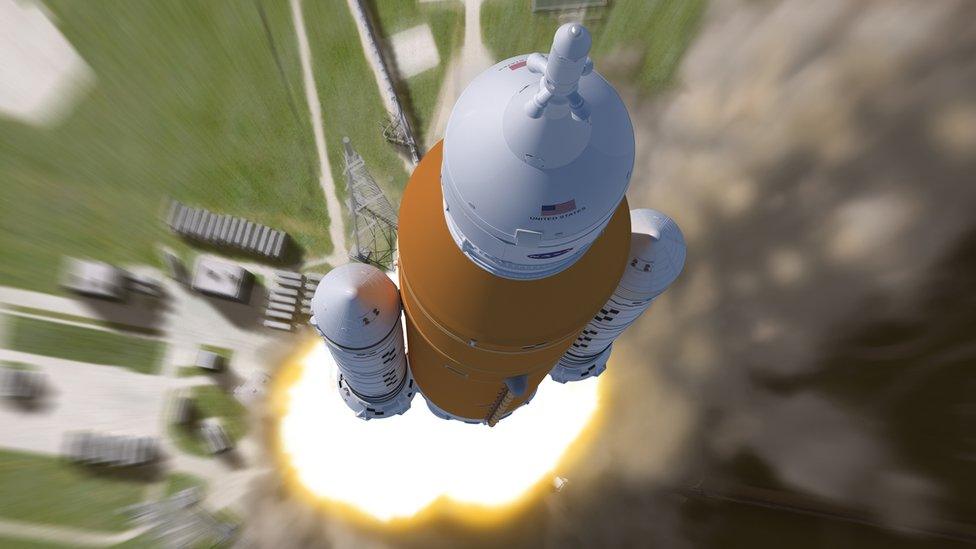
Some of the candidates will almost certainly be assigned to lunar missions under Nasa's Artemis programme
Back in the 1990s and 2000s, Nasa had only one way of getting into space - the shuttle. These candidates join the agency at a challenging and complex time, but also an exciting one.
Nasa astronaut Reid Wiseman said: "We are in the golden age of human spaceflight."
America remains a partner in the International Space Station (ISS), so candidates need to understand the systems aboard the orbiting outpost and demonstrate a working knowledge of Russian to communicate with cosmonauts.
Some could be assigned to fly on either of the two spacecraft Nasa has developed to fly to the ISS - SpaceX's Crew Dragon and Boeing's Starliner, once technical issues have been fixed on the latter. Other candidates will be selected for missions to the Moon under Nasa's Artemis programme.
These astronauts will need a deep understanding of Nasa's Orion spacecraft and any landers the agency plans to use to get to the lunar surface. The vehicle to be used for the first lunar landing since 1972 is likely to be based on Elon Musk's Starship craft, currently under development at a SpaceX facility in southern Texas.
Follow Paul on Twitter., external
Related topics
- Published14 October 2021
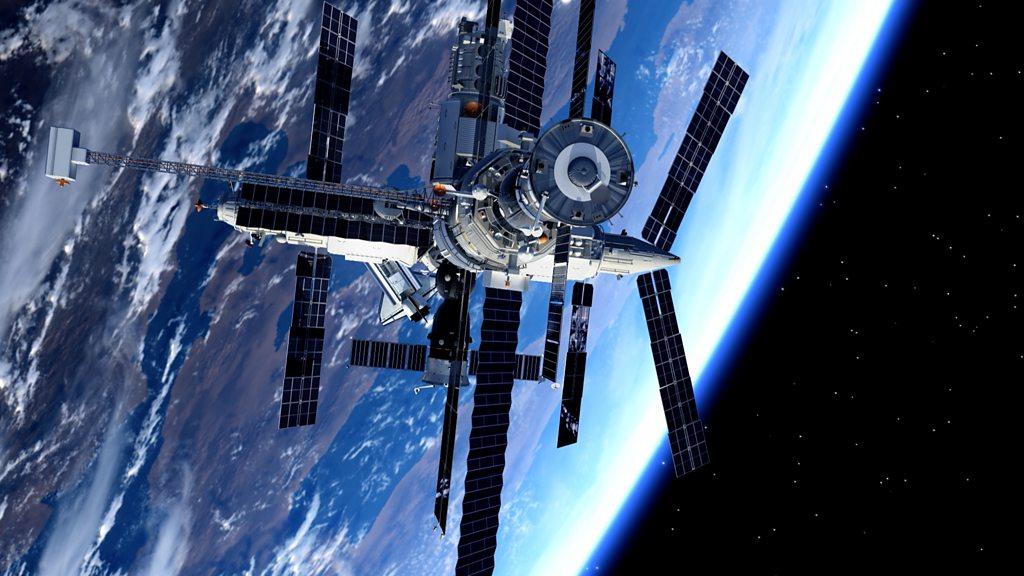
- Published26 November 2021
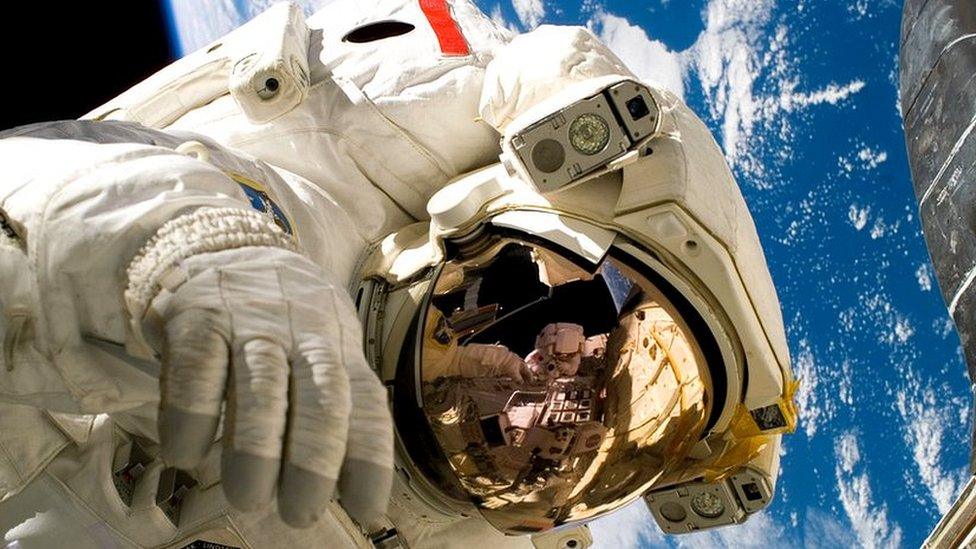
- Published5 December 2021
